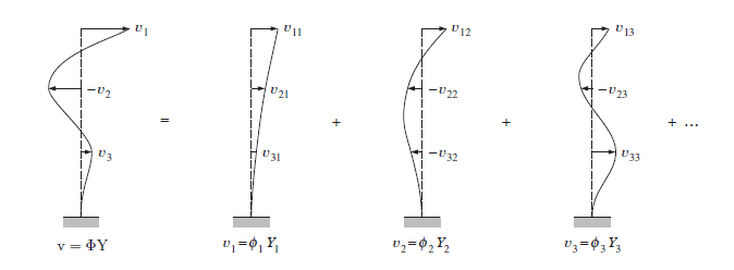
Benefits of Modal Analysis:
Global Modal Analysis offers several benefits, particularly structural engineering, mechanical engineering, aerospace engineering, and vibration analysis. Modal analysis performed through either structural testing or finite element analysis-based simulation helps you:
- Understand how a structure vibrates
- Correlate and update simulation models
- Speed up structural, vibroacoustic, and durability calculations
- Include flexibility in multibody simulation models


Modal analysis, or the mode-superposition method, is a linear dynamic-response procedure that evaluates and superimposes free-vibration mode shapes to characterize displacement patterns. Mode shapes describe the configurations into which a structure will naturally displace. Typically, lateral displacement patterns are of primary concern. Mode shapes of low-order mathematical expressions tend to provide the greatest contribution to structural response. As orders increase, mode shapes contribute less and are predicted less reliably. It is reasonable to truncate analysis when the number of mode shapes is sufficient.
A structure with N degrees of freedom will have N corresponding mode shapes. Each mode shape is an independent and normalized displacement pattern which may be amplified and superimposed to create a resultant displacement pattern, as shown in Figure 1:

Although the results from a Natural Frequency (Modal) analysis include displacements, these displacements should be used only to visualize the mode shape. That is, the magnitude of the "displacements" are relative to each other. The natural frequency is a "theoretical" result due to unspecified dynamic loads, so the results cannot contain "absolute" displacements.
After performing the modal analysis, a vibration analysis can be performed in which loads are applied to the model, and the displacement results will have a physical value.
